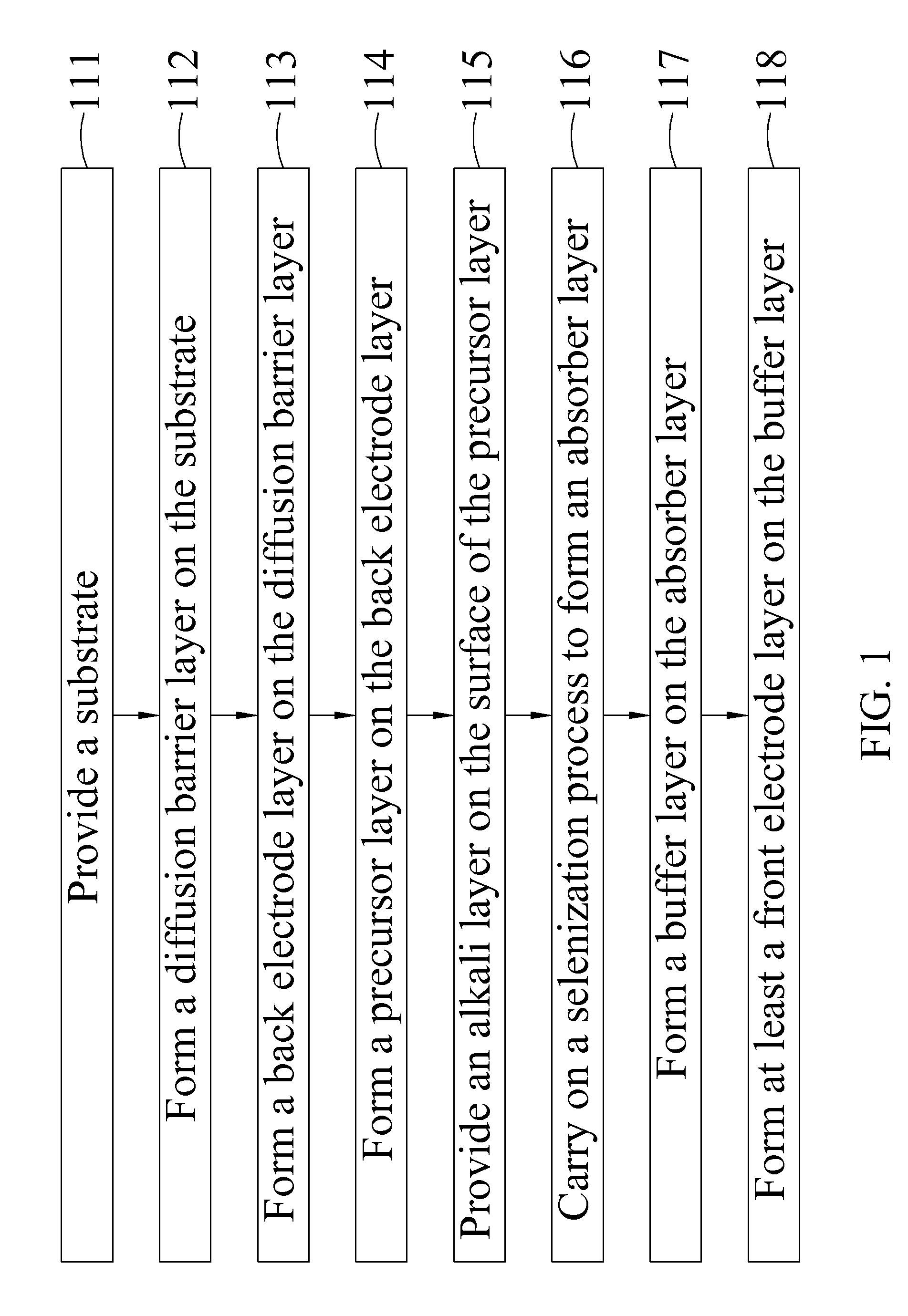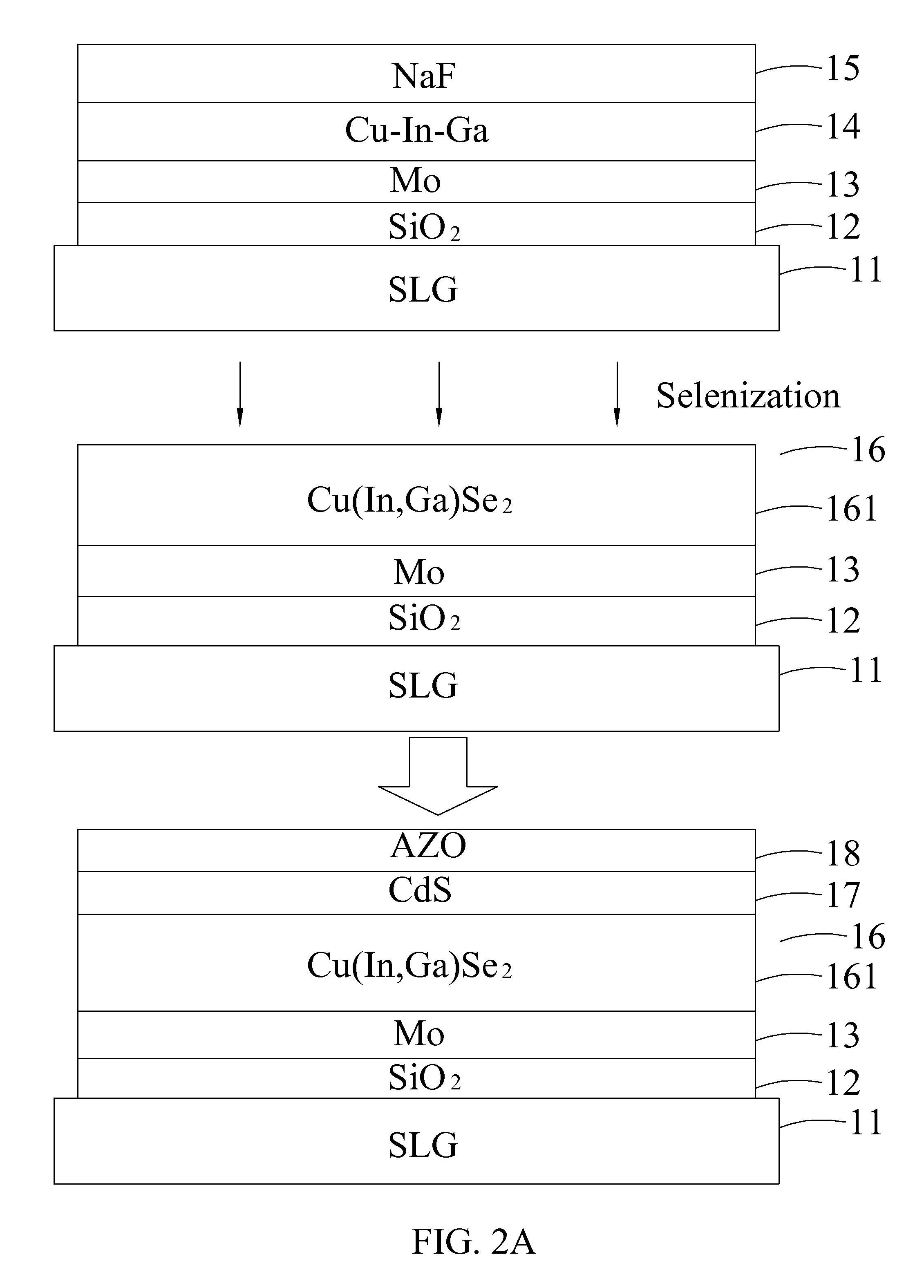Thin-film solar cell and manufacturing method thereof
a technology applied in the field manufacturing methods thereof, can solve the problems of two types of thin-film solar cells from being mass-produced, long life time, and high cost, and achieve the effects of reducing grain boundaries, reducing defects in crystals, and effective control of conten
- Summary
- Abstract
- Description
- Claims
- Application Information
AI Technical Summary
Benefits of technology
Problems solved by technology
Method used
Image
Examples
Embodiment Construction
[0020]The present invention discloses a thin-film solar cell and a manufacturing method thereof. Since the principle of photovoltaic conversion based on which the solar cell of the present invention works is known by one of ordinary skill in the art, it is not described in details herein. Meanwhile, it is understood the accompanying drawings are illustrated only for assisting in describing the present invention and is not necessarily in compliance with the exact or precise size proportion and part arrangement of a real product manufactured through implementing the present invention.
[0021]To achieve the aforesaid objects, a first preferred embodiment of the present invention is a method of manufacturing a thin-film solar cell. Please refer to FIGS. 1 and 2A. The method of manufacturing a thin-film solar cell according to the first preferred embodiment of the present invention includes the following steps:
[0022]Step 111: Providing a substrate 11. In the illustrated first preferred emb...
PUM
 Login to View More
Login to View More Abstract
Description
Claims
Application Information
 Login to View More
Login to View More - R&D
- Intellectual Property
- Life Sciences
- Materials
- Tech Scout
- Unparalleled Data Quality
- Higher Quality Content
- 60% Fewer Hallucinations
Browse by: Latest US Patents, China's latest patents, Technical Efficacy Thesaurus, Application Domain, Technology Topic, Popular Technical Reports.
© 2025 PatSnap. All rights reserved.Legal|Privacy policy|Modern Slavery Act Transparency Statement|Sitemap|About US| Contact US: help@patsnap.com



